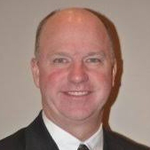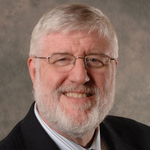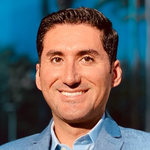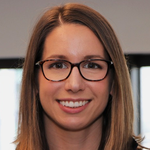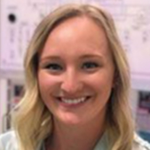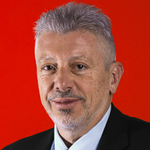- Moving at the Speed of Science: Pfizer-BioNTech COVID-19 Vaccine
John F. Kelly - Deployment of New Technologies in Real World Biopharmaceutical Manufacturing
Jeffrey C. Baker - Break
- Aseptic Processing • Looking Towards The Future
Assessing sterility assurance in aseptic processing and managing the associated risks are critical activities in the pharmaceutical industry. This session will incorporate a thought-provoking discussion revolving around advanced aseptic processing technology and the associated quality risks in the current environment where smart manufacturing creates a more holistic and interconnected system.
*This will be covered in the following 5 sessions. - Aseptic Parametric Release
Frederic AyersEnsuring safe reliable supply of pharmaceutical medicines is of critical importance for the patients that the industry serves. This presentation will be a discussion on how the industry can transition, through Industrial Revolution 4.0, to provide quality products through Aseptic Parametric Release of Parenteral Products. This will allow streamlined manufacturing, packaging and delivery processes reducing time and resource utilization for the industry. Patients will benefit from this transition and the ability of the industry to safely and reliably provide medicines.
Frederic Ayers, PhD, Research Scientist, Eli Lilly and Company (Invited) - Campaign Promise: Points to Consider When Designing a Multi-Batch Aseptic Processing Campaign
Stephen E. LangilleThe use of advanced aseptic processing technology such as single use systems and barrier isolator technology has not only improved sterility assurance levels for aseptically processed products but it may also allow for the multiple-batch of multi-batch campaigns for high demand products. The use of campaigns improves manufacturing efficiency by reducing the need for extensive line clearance and cleaning/disinfection activities following the production of each batch. However, appropriate environmental controls, processing methods, and aseptic processing simulation techniques must be employed to avoid compromising the manufacturing environment over the course of the campaign. This presentation will cover the aseptic processing risks, control measures, validation strategies, and regulatory considerations associated with the execution of multi-batch aseptic processing campaigns.
Stephen E. Langille, PhD, Senior Microbiology Consultant, ValSource Inc. - Break
- A REVIEW OF INNOVATIVE FACILITY OPTIONS IN AN ERA OF URGENT CAPACITY NEEDS
Peter J. MakowenskyjOver the last few years, we have seen a multitude of manufacturing capacity urgency. Starting with the drug shortage list, which has not diminished yet, moving into new process and facility infrastructures for cell and gene therapies to be accelerate by the COVID vaccine needs. There are no spare capacities and new infrastructures need to be made available.
Such new infrastructure cannot be design and built in the traditional way, as this would be time prohibitive and lacks the flexibility for the future. Traditional design/built activities takes months in the design phase and years in the construction of such sites.
You will learn why new design and built concepts are required. Facilities and cleanroom infrastructures also require new concepts, like standardization or turnkey facilities.
Peter J. Makowenskyj, MEng, Director of Sales Engineering, G-CON Manufacturing Inc. - QUALIFICATION OF X-RAY STERILIZATION FOR SINGLE-USE BIOPROCESS EQUIPMENT
James J. HathcockGamma sterilization of single-use systems used in biologics manufacturing, is facing increasing capacity and business continuity constraints driving the need to qualify alternate sterilization approaches within the next 2 to 3 years. With advancements in accelerator technologies, X-ray sterilization is now a mature sterilization technology being used for sterilization of medical devices, with the basic requirements well-described within the tenants of ISO11137. Herein we risk assess similarities and differences in X-ray and gamma irradiation, leading to an industry risk assessment approach supporting qualification of X-ray sterilization for single-use consumables.
I will be sharing with you the rationale behind the qualification approach, data on evaluating materials attributes of typical single-use components following X-ray and gamma sterilization, including sterility, integrity, extractables, integrity, and performance data. As single-use systems are highly customized to individual drug manufacturing operations, qualification of x-ray sterilization for biotech applications will require strong cross-industry education, cooperation and sharing of results to ensure a comprehensive solution.
James J. Hathcock, PhD, Senior Director, Regulatory and Validation Strategy, Pall Biotech - BLOW FILL SEAL TECHNOLOGY IS EXPANDING ITS REACH INTO THE ASEPTIC PROCESSING WORLD
Leonard F. PauzerAs part of this presentation, we will explore what is Blow Fill Seal technology and why it is a great option for Aseptic processing. A quick comparison of BFS technology to traditional filling operations will also be shared. In addition a review of how current advancement in Blow Fill Seal technology has led to this form of filling operation to expand in the area of Aseptic Manufacturing. Specifically BFS technology has started to be utilized in vaccine production, cold product filling, and Pre-filled syringe manufacturing. Four of the case studies that will be shared are first of their kind utilizing BFS technology. One case study incorporated cold product filling, utilization of PODS, and vaccine filling. BFS technology brings some unique solutions to the industry but also brings with it new facility, quality, and process changes which required to be addressed. A review of these solutions and challenges will also be shared with the audience. The presentation will be based on actual project that have been executed and are in the process of being completed providing the audience with real world examples and lessons learned from the lead engineer.
Leonard F. Pauzer, Director Process Technology, Integrated Project Services
- IMPROVING, MODERNIZING, TRANSFORMING
Bruce Loxley (Moderator)In this session, thought leaders introduce advanced ways of working in process validation, the use and misuse of aseptic process simulations, and an update on where we are with Pre-Use/Post Sterilization Integrity Testing.
*This will be covered in the following 5 sessions. - Automated CPV Reporting: From Routine Compliance Exercise to State-of-the-art Process Monitoring
Ashwin MonianContinued Process Verification (CPV) is the third stage of FDA process validation, used to prove to health authorities that a manufacturing process can operate consistently and compliantly. For each licensed product, between two and four times per year, technical operations engineers prepare a report containing statistical charts for several CQAs and CPPs, along with explanations for any observed deviations or trends. Since the submitted report must adhere to GMP standards, generating just one of these reports using the historic process would incur weeks of manual effort to aggregate the process data and generate the requisite charts. This presented a significant opportunity to implement automation, stripping away a significant amount of repetitive, manual tasks. You will learn how our team custom-developed a GMP-compliant, Automated CPV software through a collaboration between Manufacturing Sciences and IT, and CPV reports can now be generated in minutes instead of weeks. I will also share how we implemented this software at our five largest plant sites, and anticipate integrating our entire network by 2022, resulting in significant operational savings.
Ashwin Monian, BS, Senior Engineering Specialist, Merck & Co., Inc. - Risk-Based Cleaning Validation • Mathematics of Maximum Safe Carry over • Develop and Apply Limits
Javier Cardenas•Susan B. ClearlyThe presentation discusses where MAC fits in the larger picture of a risk-based Cleaning Validation lifecycle and includes a review of the conceptual and mathematical approaches to calculating MSC / MAC.
Examples of three approaches, including sample equations, which will be covered and dissected to provide understanding of the equations and source of the data which replaces the variables in the equations. An assessment of the applicability of each approach/equation, from a regulatory and risk perspective will be included in the presentation.
Finally, a case study which illustrates which equations were used for specific carry over scenarios by operating companies, and why they used them.
Javier Cardenas, PhD, Senior Consultant, Azzur (Invited)
Susan B. Cleary, BCS, MBA, Director Product Development, Novatek International - Break
- The Use and Misuse of Aseptic Process Simulations in the Validation of the Aseptic Processes
Hal BasemanAseptic process simulations or media fills have long been a basic principle and regulatory expectation for aseptic process validation. However, understanding of their ability to ensure process performance and product sterility has, at times, been misunderstood and over-relied upon. This is especially relevant in regard to challenges faced by the manufacture of new advanced therapies, use of new technologies, and sustainable product supply. Although the APS has a significant role to play, they should not be considered as the sole means to validate the aseptic process. The APS alone is not designed or scientifically capable to determine process duration, fatigue effect, equipment capability, environmental conditions, or intervention validity. Using APS to do more than it is designed to do can result in poor understanding of process capability, de-emphasis of available scientific evidence, burdensome protocol, a false sense of security and a lowering of sterility assurance. A closer look at how we traditionally validate aseptic processes and assure sterility is needed. To that end, this presentation will present a risk-based view of APS limitations and benefits and explore ways to improve aseptic process validation.
Hal Baseman, MBA, Chief Operating Officer, ValSource Inc. - Novo Nordisk Approach to Modernizing Existing Facilities by Introducing New Innovative Technologies and Processes
Thomas BuschMany conference talks on aging facilities describe a perfect future setup that typically require significant rebuilds to accomplish. With stringent constraints from regulatory bodies, internal QMS, and the need for sufficient supply of product, these approaches may be very difficult to realise in the short term. What do you do in the meantime? This presentation will present Novo Nordisk ambition of moving from being a fast follower to a technology leader, and will present two concrete cases of technology implementation to showcase what can be done to take steps toward future technology setup without shutting your facilities down for months and even years.
Thomas Busch, Project Director, Novo Nordisk A/S - PRE-USE/POST STERILIZATION INTEGRITY TESTING • RESULTS OF THE SFQRM
Maik JornitzThe last Annex 1 included a paragraph, which stated that a sterilized filter requires to be integrity tested pre-use. This pre-use/post sterilization test, also known as PUPSIT, can increase the complexity of a sterilizing grade filtration system and a variety of considerations have to be evaluated to see whether it is possible to implement such test or what would be required. The complexity in design and handling can cause an elevated risk to perform such test and it was debated over the last 15 years. To gain a better understanding and a platform to make decisions, PDA and Biophorum joined in a consortium, SFQRM, which had four workgroups with different tasks establishing data, which support both, the regulatory and end-user decision process. The talk will review the different discussions, the data established and the result interpretation.
Maik W. Jornitz, CEO, G-CON Manufacturing Inc.
- QRM AND KNOWLEDGE MANAGEMENT
Max FernandezQuality Risk Management (QRM) and Knowledge Management are foundational elements of our industry today. This session will examine both of these topics and how they can be applied. The session will also examine a model for ensuring successful aseptic operations governance through structure, skills and competencies.
*This will be covered in the following 5 sessions. - Lessons Learned From QRM Practitioners
Tiffany Baker•Danica Brown•Amanda M. McFarlandICH Q9 has been in place since 2006 and in order to best implement the guidance, risk practitioners have identified ways to overcome challenges in the implementation and execution of risk management—Tiff, Danica, and Amanda would like to share their lessons with you! Collectively, the speakers have 35 years of risk management execution experience. In these short presentations, they will address their most significant lesson learned.
Tiffany Baker, MBA, Consultant, ValSource Inc.
Amanda M. McFarland, MS, Senior Consultant, ValSource Inc.
Danica Brown, Consultant, ValSource Inc. - Risk Mitigation Through Physical and Chemical Testing: Lyophilized Drug Product Case Study
Samantha Singer•Diego A. ZurbriggenPhysical and chemical properties of a container closure system for parenterals may affect the drug manufacturing process, product quality, and patient safety. In the case of a lyophilized product, the risks are mainly associated with Design for Manufacturability and impact on product quality.
An extended stability study was designed to evaluate the effects of three halobutyl elastomer formulations used for lyophilization stoppers on drug product leachables, residual moisture and container closure integrity of a model lyophilized preparation. The simulated liquid drug product was filled into vials and subsequently lyophilized using suitable lyophilization processing parameters. Stored at controlled room temperature, the lyophilized preparation will be analyzed periodically over 4 years. Real time storage data up to 6 months will be presented. The chemical and physical data generated provide a better understanding of potential risks.
This presentation will showcase a comprehensive approach to understand potential risks to lyophilized drug product quality based on chemical and physical performance testing. The discussion will cover key considerations in the design of a lyophilized drug product packaging study leveraging this analytical approach.
Diego A. Zurbriggen, Technical Account Manager, West Pharmaceutical Services, Inc.
Samantha Singer, MS, Scientist I/Project Director,Lyophilization Technology Inc. - Break
- Holding on to What You Know: Improving Knowledge Transfer to Reduce Risk and Benefit Patients
Martin J. LipaExpectations to apply the best available knowledge, experience, expertise, learnings and know-how are woven throughout regulatory and industry guidance, not just in ICH Q10 where knowledge management (KM) is prominently presented as a pharmaceutical quality system enabler. Indeed, knowledge is expected to be managed across the product lifecycle to ensure product realization, establish a state of control, a basis for continual improvement, reduce risk to patients, and enable favorable business outcomes.
This presentation will outline a progression in the application of knowledge management to help satisfy these expectations. First, a case study will illustrate pragmatic practices to improve the transfer of tacit knowledge during technology transfer, including favorable outcomes observed. Second, ‘zooming out’ to consider technology transfer in aggregate as a key lifecycle activity, a knowledge transfer enhancement (KTE) framework is presented to improve and standardize knowledge transfer, based on deficiencies in current practice. Finally, a discussion with a supporting framework on how to better integrate knowledge management and quality risk management (QRM), as a means to drive more informed risk-based decision making and ultimately reduce risk to patients. This is made possible by drawing on the best knowledge available to the organization – by managing knowledge as an asset.
Martin J. Lipa, Executive Director, Knowledge Management, Merck & Co., Inc. - Organization, Governance and Competency Development For Successful Parenteral Manufacturing
Mauro GustiA successful manufacturing operation for parenteral products filled aseptically, on top of good facilities and equipment, does require:
- Well defined organization (workers, supervisors, professionals, experts, leaders with related functions)
- Appropriate governance and business processes (information/ escalation/decision making)
- Proper technical competency distributed across the organization
The presentation will cover an example of organization, governance and competency development which has resulted in a very successful parenteral manufacturing operation.
Mauro Giusti, Advisor, Site External Network
Eli Lilly Italia
- PDA 374.1 Technical Report No. 22: Process Simulation for Aseptically Filled Products
Hal BasemanTRAINING COURSE DESCRIPTION
The objective of aseptic processing is to prevent the microbiological contamination of sterile product manufactured using the process. The verification of the ability of the process to produce sterile product is evaluated by aseptic process simulation studies or media fills.
This training course is based on PDA Technical Report No. 22: Process Simulations for Aseptically Filled Products, as well as relevant topics from PDA Points to Consider for Aseptic Processing: Part 2, and the EMA draft Annex 1 revision. The training course will address various elements required in the design and execution of aseptic process simulations to include personnel qualification, media selection and preparation, filling considerations, interventions, duration and number of units filled, pre and post incubation inspections, incubation conditions, acceptance criteria and investigations and corrective actions. The use of risk-based decision making will be considered.
LEARNING OBJECTIVES
Upon completion of this training course, the attendee will be able to:
- Identify the updated scientific and regulatory technology and expectations in the design, operation and interpretation of process simulations
- Discuss process simulation concepts and principles such as the number and frequency of simulations, worst case and risk assessment and ongoing evaluations
- Describe how to use risk management as it applies to aseptic processing simulations
- Discuss how process simulations can be applied to various types of aseptically processed products (lyophilized products and powders)
- Discuss the necessary documentation associated with process simulations
- Apply modern concepts to establish appropriate acceptance criteria for aseptic process simulations, evaluate the results and as necessary investigate any failures and recommend appropriate corrective and preventive actions
WHO SHOULD ATTEND?
This training course is intended for professionals who are involved in aseptic process simulations.
Function Area(s): Quality Control (Microbiology), Quality Systems, Quality Compliance, Engineering, Manufacturing, Quality Assurance Operations, Regulatory Affairs, Technical Operations, Training, Validation
Job Position(s): Specialist, Operator/Technician, Supervisor, Manager, Director, Engineer, Scientist, Auditor/Inspector
